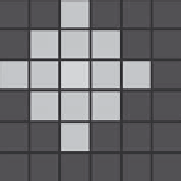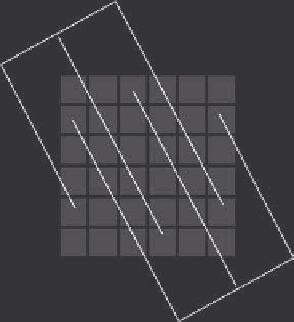Biomedical Engineering Reference
In-Depth Information
1
1
1
1
1
1
1
Figure 3.9
A demonstration that the “cross constraints” are met.
123
23
12
123
123
3
1 23
123
Figure 3.10
A wiring example for the pin assignment obtained using the Connect-5 algorithm. For each
partition, two pins can be wired in one layer.
PCB
(see Figure 3.10)
. The graph-coloring approach does not lend itself to
this simple pin layout because of the likelihood of irregular vertex coloring.
The Connect-5 algorithm succeeds in avoiding droplet interference
while moving a single droplet inside the partition. Recall that in the
droplet-trace-based array-partitioning method, partitions contain only
one droplet each. Therefore, the Connect-5 algorithm can be integrated
into the droplet-trace-based array-partitioning method to generate droplet-
interference-free layouts with a minimum number of pins.
3.1.4 Application to Multiplexed bioassay
To evaluate the array-partitioning and pin-assignment method for pin-
constrained microfluidic biochips, we use a real-life experiment of a multi-
plexed biochemical assay consisting of a glucose assay and a lactate assay based
on colorimetric enzymatic reactions. These assays have been demonstrated
recently [38]. The digital microfluidic biochip contains a 15 × 15 microfluidic


